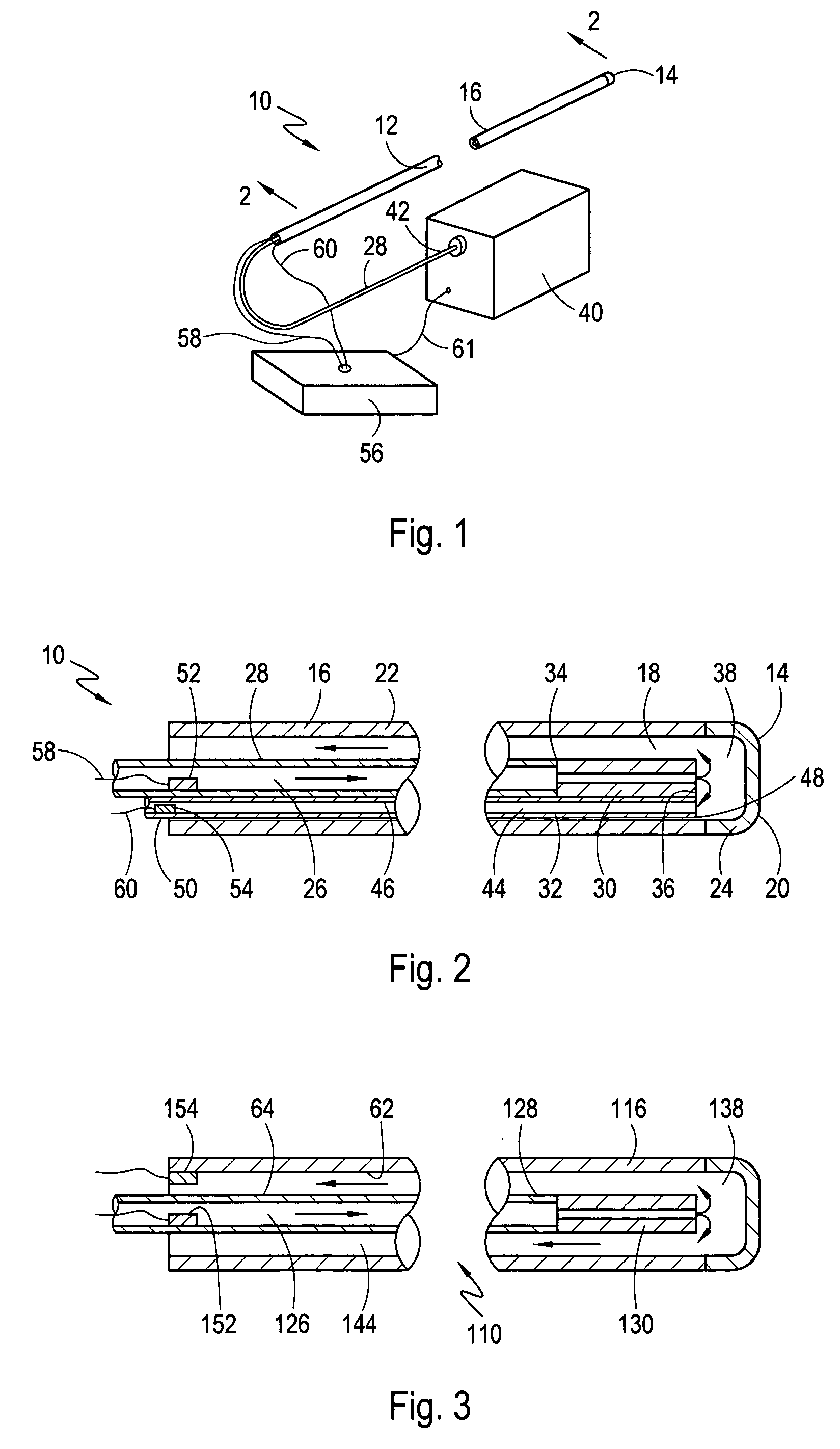Pressure monitor for cryoablation catheter
a technology of pressure monitor and catheter, which is applied in the field of cryoablation catheter devices and methods, can solve the problems of reducing the likelihood of catheter tip successfully navigating, increasing the tip size, and presenting a relatively harsh environment for pressure sensors
- Summary
- Abstract
- Description
- Claims
- Application Information
AI Technical Summary
Problems solved by technology
Method used
Image
Examples
Embodiment Construction
[0019]Referring to FIG. 1, a device for cryoablating tissue at an internal treatment site is shown and generally designated 10. As shown in FIG. 1, the device 10 includes a catheter 12, the distal end of which is typically inserted into the vasculature of a patient (not shown) and advanced to a treatment site. With the distal end of the catheter 12 positioned at a treatment site, an operative surface such as surface 14 can be cooled to a cryogenic temperature (e.g. minus −85 degrees Celsius) and placed in contact with selected internal tissue to cryoablate both contacted and surrounding tissue. Cryoablation of tissue can be performed for a variety of purposes including, but not limited to, the destruction or isolation of diseased tissue. In one application, cryoablation can be used to form conduction blocks to prevent unwanted electrical signals from originating or passing through a specific portion of a patient's body. For example, in one procedure that is useful in treating patien...
PUM
 Login to View More
Login to View More Abstract
Description
Claims
Application Information
 Login to View More
Login to View More - R&D
- Intellectual Property
- Life Sciences
- Materials
- Tech Scout
- Unparalleled Data Quality
- Higher Quality Content
- 60% Fewer Hallucinations
Browse by: Latest US Patents, China's latest patents, Technical Efficacy Thesaurus, Application Domain, Technology Topic, Popular Technical Reports.
© 2025 PatSnap. All rights reserved.Legal|Privacy policy|Modern Slavery Act Transparency Statement|Sitemap|About US| Contact US: help@patsnap.com


